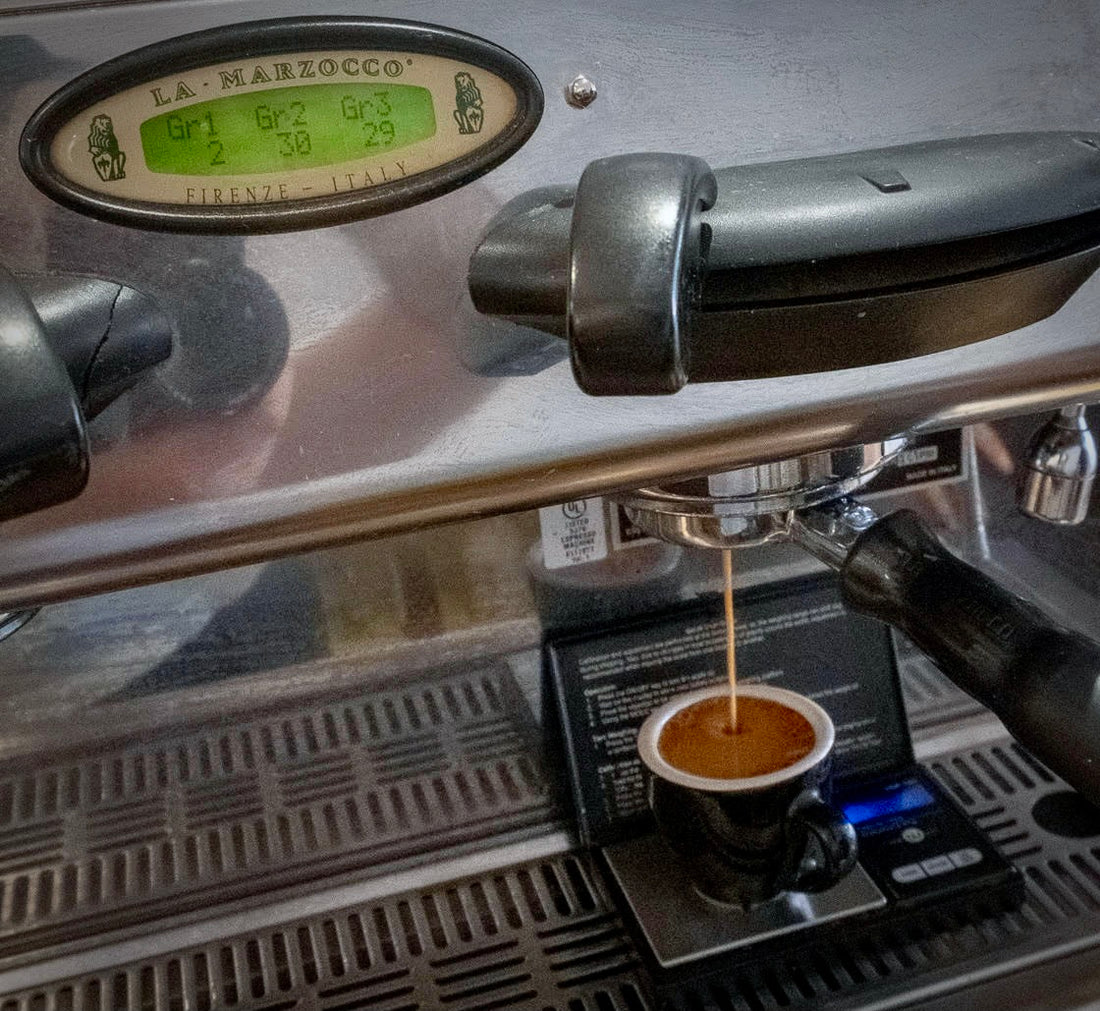
Espresso Bar Mise en Place
Share
Mise en place is a French culinary term that means “everything in its place”, which refers to the specific way in which ingredients are kept and organized to maximize efficiency and accuracy within a professional kitchen. While the ingredients for preparing coffee drinks are pretty minimal, the same concept can be applied to the tools we use to optimize bar flow in a cafe. This is how our baristas utilize Mise en place while running the espresso bar.

The foundation of Mise en place is determined during the build out process of a cafe. This is the time in which the permanent fixtures of the bar will be put in place, such as the espresso machine itself, the grinder or grinders, the pitcher rinser and dump sink, and the milk fridge. Because these pieces of equipment are permanent, it is important to consider how your bar flow will look before installation.
The first tool a barista needs regular access to is a scale. We run with two scales on our bar. One is kept directly beneath the grinder and is used for measuring the dose, or ground coffee, for our espresso. We measure each shot to ensure consistency. A second scale is kept on our drip tray to measure our yield, or brewed espresso. By keeping the scales in the same place, we’re able to build muscle memory and move through the drink queue as efficiently as possible.

Secondly, a barista will need a timer. Many espresso machines have built-in shot timers to measure the extraction time for a shot of espresso. For those that don’t, such as a La Marzocco Linea, we keep a magnetic kitchen timer stuck to the front or side of the machine. It is important for these timers to have an easy to read screen and easy to press buttons for starting and stopping your shot in conjunction with your shot of espresso.
Making coffee in a high volume cafe can be messy business, for this reason we have dedicated rags for specific purposes. We keep a damp rag on the edge of the drip tray for cleaning the steam wand before and after steaming milk. We have a dedicated rag whose sole purpose is to clean the residual espresso from the portafilter after each before and after each shot. Any coffee grounds that remain in the portafilter will continue extracting when the second shot is pulled, contributing many unsavory flavors to your espresso. It is also a good idea to clean your portafilter of any water that builds up inside while not in use, as we don’t want any reaction taking place between the coffee grounds and water until we’re brewing the espresso in the group head. Lastly we keep a rag in a bucket of sanitizer for cleaning any surfaces throughout service.
We keep our milk steam pitchers on the pitcher rinser beside our espresso machine. The rinser allows us to easily clean our pitchers before and after each drink (notice a trend?). The pitchers rest upside down on the grate so any water can drain out. We have specific steam pitchers we use for either regular milk or non-dairy.

After you have your tools in place, we can pay some attention to our ingredients. While you may not be able to change the location of certain large pieces of equipment, you can certainly organize your ingredients within them in a way to maximize your bar flow. At our cafes, we only run one espresso blend so we only have the need for one espresso grinder. We keep our grinder within a short step and an arm's reach of the group heads to reduce the time it takes to continuously dose shots during service. We like to keep our hopper as full as possible throughout the day.
Within the milk fridge, we keep our milk, non dairy milk, and our syrups. It is incredibly helpful to keep these in the same place in the fridge every day, so you know where to reach without having to spend too much time reading the labels. Because the fridge is below waist height, it is nice to label the syrups in large legible writing so a barista can recognize them at a glance.

The last element of Espresso Mise en Place is the drinkware. This can be either ceramics or disposable to-go cups. Ceramic cups live on top of the espresso machine which not only keeps them warm, but keeps them easily accessible to the barista. Paper or plastic cups are a little more unsightly, so they typically live off to the side or on the back bar, but always within one step from the espresso machine. I like to keep a small cache of lids on top of the espresso machine to save myself from having to turn around and additional time during the drink making process.
Understanding these elements of barflow are so important to have a fast and efficient drink program. Everything should be clean, well stocked, and in a dedicated place. When training baristas I stress this before we even begin drink building. The same concepts that apply in a professional kitchen or a professional bar apply to a specialty cafe. Mise en place.
